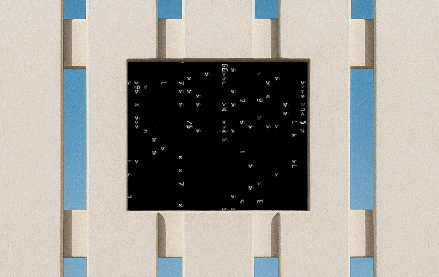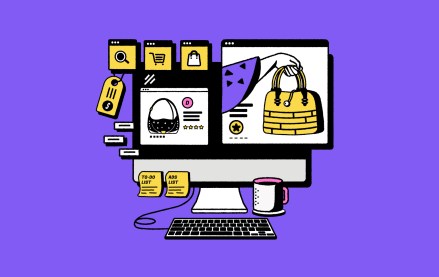Join us Dec. 1-3 in New Orleans for the Digiday Programmatic Marketing Summit

Creators are flocking to LinkedIn — and brands’ dollars are right behind them.
As LinkedIn positions itself more firmly as a home for creators, influencer marketers who operate within the platform’s ecosystem say that their business is booming.
B2B influencer marketing agency Creator Match, which launched in early 2024, has made 80 percent of its lifetime revenue in the “past few months,” paying out over $1 million to LinkedIn creators during that period, per CEO AJ Eckstein.
Meanwhile, B2B creator management firm The Wishly Group has gone from managing six LinkedIn creators in August 2024 to 30 creators on the platform in April 2025, with its average number of campaigns per month increasing from 20 to 75 during the same period, according to founder Aneesh Lal. And B2B influencer marketing agency Cherry Lane has seen multiple clients grow their LinkedIn ad spend from the tens of thousands in 2024 to hundreds of thousands of dollars in 2025, per co-founder Peter Boyles.
LinkedIn influencer marketing agency Creator Authority is on track to grow its business by 300 or 400 percent year over year, according to CEO Brendan Gahan, although he declined to share from what baseline. “The conversation before was very much that if you even were to get a budget, it was very small, because it was very experimental,” Gahan said. “Now, people are coming to us with, ‘We have a budget allocated for this.’”
For the most part, influencer marketing posts on LinkedIn fall into three main categories. There are posts by mainstream celebrities (think Snoop Dogg’s Notion post earlier this year). Then there are posts by creators with large followings on other platforms like Instagram and TikTok who have moved onto LinkedIn over the past year, such as Corporate Natalie. And then there are creators who are native to LinkedIn — executives and business people who grew an organic following on the platform and are now leveraging it to sign brand deals. According to LinkedIn influencer marketers, brands’ interest in LinkedIn creators is evenly split among these three categories.
“There’s still some brands on here that don’t know how to pay appropriately to your following size,” said LinkedIn creator April Little, who has over 250,000 followers on LinkedIn and said that she has earned approximately $150,000 through LinkedIn brand partnerships over the past two years. “Most people charge about one percent of their following; you could charge more than that if you have a smaller following, but you have killer engagement,” she added.
An opportune moment
The influencer marketing boom on LinkedIn is the result of a confluence of factors. One significant element is the rise of video on LinkedIn, which marketers say has given brands more opportunities to work with influencers on the platform, particularly in light of a potential TikTok ban in the U.S. Another is the ongoing brand safety struggles of X, which has seen an exodus of corporate thought leaders over to LinkedIn.
LinkedIn has also intentionally pushed creators to try the platform since 2021, when it launched its Creator Accelerator Program. And the platform has benefited from a broader rise in brands’ interest in influencer marketing, with advertisers such as Unilever planning to increase their spending in the channel in 2025.
Executives at ad agencies Dentsu and Ogilvy confirmed that they had observed individual brands’ spending on LinkedIn marketing grow in the past year amid a general influx of interest in influencer marketing across the board, though they wouldn’t confirm specific numbers.
“It’s about a business-to-business connection, and [LinkedIn is] a business platform,” said Ogilvy senior director of social Jennifer Winberg. “Sometimes, it’s about providing a platform for the brand to talk about what they’re doing from a corporate comms perspective.”
Per the agency execs, the majority of brands currently spending on LinkedIn influencer marketing are B2B advertisers focused on business uses or professional development, such as Hubspot and Notion. Both brands have stepped up their LinkedIn activity in the past year, with Hubspot currently spending about 10 percent of its influencer marketing budget on LinkedIn, per Hubspot head of creative partnerships Alanah Joseph, who did not specify the brand’s overall influencer marketing budget, and Notion leaning even further into the platform.
“Last year, LinkedIn was probably only around 25 percent of our budget,” said Notion head of influencer marketing Danielle Ito, “and now it’s probably closer to 40 percent, and maybe ramping up to 45 percent.” Ito did not specify from which platforms Notion was pulling its spend as it ramped up its LinkedIn activity.
New options for advertisers
LinkedIn recognizes brands’ growing interest in reaching its users — and the company is rolling out new products accordingly. On May 1, LinkedIn expanded its Wire Program revenue share system to include individual creators, renaming the program BrandLink in the process. Now, brands interested in advertising alongside creators on LinkedIn can purchase 15-second video spots embedded into new “LinkedIn Shows” — exclusive video content produced by creators and publishers about topics such as artificial intelligence and female leadership.
Although advertisers are currently able to purchase sponsorship opportunities for LinkedIn’s creator-focused shows, they will not be able to run creator campaigns through the shows until June 2. LinkedIn plans to announce its suite of shows at NewFronts next week, with the initial rollout including six shows on topics such as executive leadership, AI innovation, female entrepreneurship and enterprise marketing. The shows will be hosted by creators including Gary Vaynerchuk, Rebecca Minkoff, Candace Nelson and Guy Raz, with titles such as “The CEO Playbook,” “AI in Action,” “Lead Like Her” and “The SaaSy Hour with GaryVee.”
“Advertisers or marketers can choose to work with a particular publisher or creator, or they can choose to work on a particular topic, and then once they have decided that, then we do the hook-up to the right shows, right creators and so forth,” said LinkedIn vp of product management Abhishek Shrivastava. “Once the hook-up is done, then the marketers can actually create campaigns using all of the excellent targeting that we have on the platform.”
Although LinkedIn’s BrandLink represents an alternative way for advertisers to reach LinkedIn users through creators, neither LinkedIn-first influencer marketers nor holding company agency reps said they’re concerned that the rollout could risk cannibalizing some of LinkedIn creators’ existing influencer marketing revenue. They pointed out that BrandLink ads are more of a media buy than an in-depth brand partnership, making it likely that brands interested in purchasing BrandLink ads would do so from a different budget than the budget that goes toward their influencer marketing on LinkedIn.
“The whole industry is moving towards having a holistic view across paid, owned and earned, and I think LinkedIn themselves would say you get your most impact when you are not looking at things in silos,” said Dentsu Creative CEO Jessica Tamsedge. “So, that’s why I think the more that they innovate, the more options you’ve got — and the more you can test and grow the pie, not compete within the pie.”
More in Media

AP makes its archive AI-ready to tap the enterprise RAG boom
It’s a strategy that should secure its future as an information data repository for the AI era, and widen its customer base to include more enterprise clients by meeting their AI needs,

Inside Reuters’ agentic AI video experiment
Reuters is experimenting with using an AI agent to speed up its video production process, and hired its first AI TV producer.

Shopify just became the biggest company to launch a Substack newsletter
Shopify is the first company of its kind — an e-commerce platform — to take the plunge into Substack.








